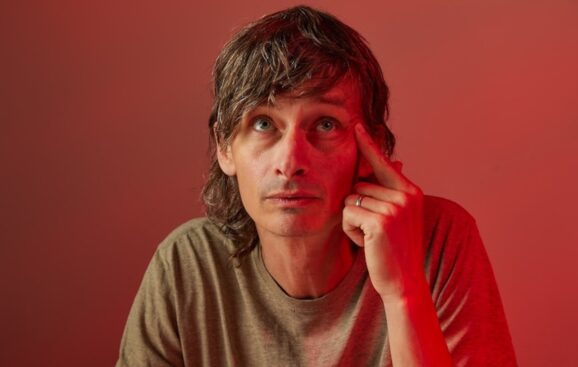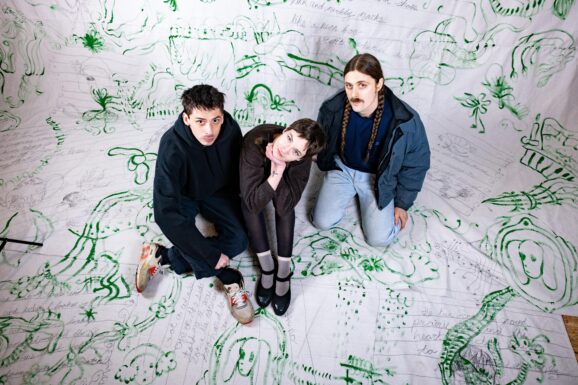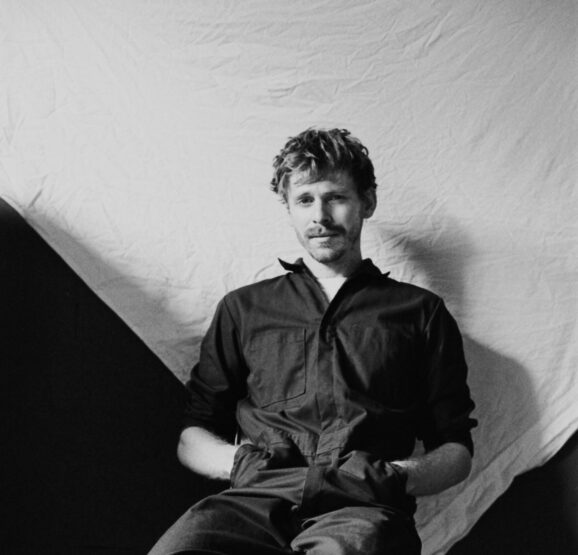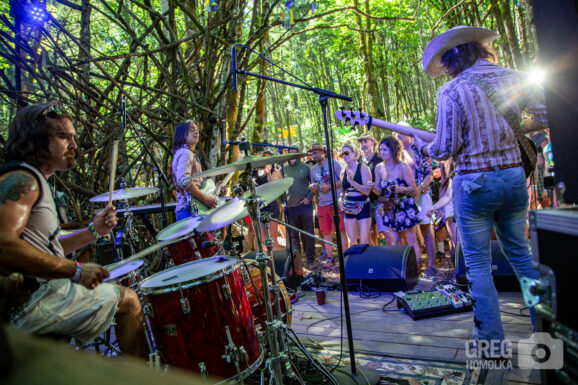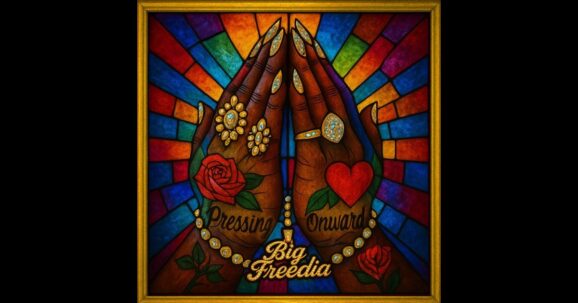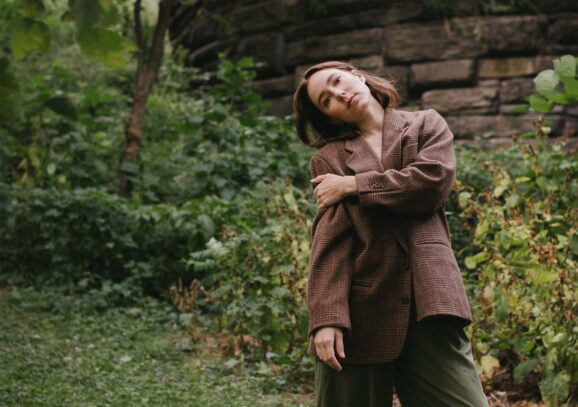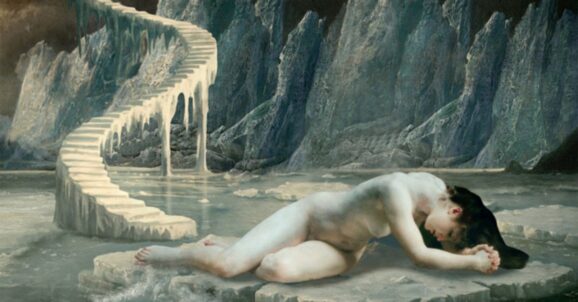Last week we aired Part One of our interview with Zev Feldman, an internationally recognized, GRAMMY-nominated independent record producer and the Co-President of Resonance Records in Los Angeles. He is a driving force for Record Store Day. The first interview focused on the process and his operation, while this, Part Two, addresses the releases that he’s made available.
Feldman is also a consulting producer of archival and historical recordings for Blue Note Records. He’s widely known as the “Jazz Detective.” Over the last 25 years, he has worked for PolyGram, Universal Music Group, Rhino/Warner Music Group, and Concord Music Group, among others. In 2016, he was voted “Rising Star Producer” in DownBeat Magazine’s International Critics Poll, and he was voted “Producer of the Year” in 2022. In addition to his lauded work at Resonance, where he works closely with the estates of jazz icons such as Bill Evans and Wes Montgomery, he’s also involved with various other labels covering jazz, blues, and rock, including Elemental Music, Sunset Blvd Records, Real Gone Music, Reel To Real Recordings, Tompkins Square and new this year, Deep Digs. Feldman has earned accolades as producer or co-producer on major archival releases by jazz icons, including Thelonious Monk, John Coltrane, Charles Mingus, Art Blakey, Sonny Rollins, Ahmad Jamal, Albert Ayler, Chet Baker, Jaco Pastorius, and many more. His Feldman currently resides in Maryland after living in Los Angeles for the past 17 years.
- Art Tatum – Jewels in the Treasure Box: The 1953 Chicago Blue Note Jazz Club Recordings (Resonance)
- Chet Baker/Jack Sheldon – In Perfect Harmony: The Lost Album (Jazz Detective)
- Cannonball Adderley – ‘Burnin’ in Bordeaux’: Live in France 1969 & ‘Poppin’ in Paris: Live at L’Olympia 1972 (Elemental)
- Yusef Lateef – Atlantis Lullaby: The Concert in Avignon – (Elemental)
- Mal Waldron/Steve Lacy – The Mighty Warriors: Live in Antwerp (Elemental)
- Shelly Manne and His Men – Jazz from the Pacific Northwest (Jazz Detective)
- Sun Ra – Sun Ra at the Showcase: Live in Chicago 1976-1977 (Jazz Detective)
- Sonny Rollins – Freedom Weaver – 1959 European Tour (Resonance)
- Sister Rosetta Tharpe – Live in France – 1966 Concert in Limoge (Deep Digs)
This crop of archival releases represents several firsts for you, beginning with Art Tatum. Tell us about it.
This is like the Dead Sea Scrolls of jazz. I’m not sure how else to tell you about the importance of it. The music is wonderful. George Klabin and I have been looking for previously unissued Art Tatum recordings for years. He’s someone who’s really captivated us, who’s inspired us deeply. And we feel these reverberations from his music so many years since he’s been gone, gone since the 50s. These are very important recordings that came to us a few years ago through the Holtzfeind family. Tom Holtzfeind owned the Blue Note Club in Chicago, and we had a chance to work with the family to put out this project. Matthew Lutthans worked with the original tapes and did an unbelievable job. But George and I had discussions about wouldn’t it be great if we found previously unissued Eric Dolphy, then came Musical Prophet, there’s been Jaco Pastorius, a long list of artists we’ve talked about that came to fruition, and this one was very important. It wasn’t just about getting out any Art Tatum. We always have to be evaluating whether or not we are contributing to an artist’s legacy. I was just saying that we’re not just trying to bring any old recordings out, but these were amazing ones with Everett Barksdale and Slam Stewart from ’53.
You’ve unearthed Chet Baker twice before. You now have him as co-leader with jack Sheldon. How did this one come to fruition?
This is a very special project that came my way from legendary film producer and director Frank Marshall and his producer/business partner Jeff Pollock. Frank Marshall is one of the most important filmmakers in American history – Raiders of the Lost Ark, Bourne Identity, Color Purple…you can pull up his credits. Anyway, his father was Jack Marshall, a legendary guitarist who worked at Capitol Records with all sorts of greats. In 1972 Baker and Sheldon went into a recording studio in Tustin, CA where he and Hank Quinn made an album that got lost a year later. They’re important because they document the return of Chet Baker, even I believe a year or so before his other ‘official’ return. Marshall had these relationships. They went into the studio with pianist Dave Frishberg, bassist Joe Mondragon, and drummer Nick Ceroli, made this album and then Jack Marshall passed away, I believe in 1973, suddenly. The tapes ended up getting shelved with the family belongings. Last year I was contacted by Frank thanks to Jeff Gold, the author, musicologist, and collector supreme, who referred them to me. This project ended up coming to Elemental Music because of the longstanding relationship with the Chet Baker Estate. Thanks to the generosity of Jordi Soley and Carlos Agustin Calembert we were able to make this release possible. It’s a wonderful project for me. I especially love all these musicians. And it’s funny because I grew up in a younger generation when in the 1970s and ‘80s I was listening to Schoolhouse Rock. Jack Sheldon was a part of that and even had Dave Frishberg in the piano chair. These guys were West Coast cats. I love Jack Sheldon. I love Chet Baker. This is the third Chet Baker release I’ve had the honor of producing – Live in Paris on Elemental and then Blue Room on my Jazz Detective last year and now this new one. I love this recording and it’s just very personal, getting a chance to work with Frank Marshall on this release. And it’s an all analog recording. We had a master tape and were able to go all analog all the way thanks to Matt Lutthans. This is an audiophile’s dream.
The two Cannonball Adderley releases are sure to be popular. What makes them special and why was important to release both of them at the same time?
We have two great projects from 1969 and 1972 come from the INA in France, originally recorded for the ORTF – amazing broadcast quality recordings that sound wonderful. We were working on them last year, and I made a convincing argument that we needed to put out both projects at the same time because it’s a study of Cannonball and very much a wider narrative. These bands he had in ’69 and ’72 were strong. He was at the height of his powers. And they also reflect a transition in his music, even reaching wider audiences after Mercy, Mercy, Mercy. You have this band from Bordeaux, France in’69 with Joe Zawinul in the piano chair with Victor Gaskin on bass, Roy McCurdy on drums. And of course, on all tracks, is alto saxophone with Cannonball and cornet with Nat Adderley. The recording in ’72 was also transitioning…there is funk and other incredible vibrations going on with this music, which was really a shift for Cannonball. They sound great and on the ’72 recording along with Cannonball and Nat you have George Duke on electric piano with Walter booker on bass and Roy McCurdy once again. This is exciting because I work with my friends at Ina France who have made these projects possible and at Resonance and at Elemental and at Tompkins Square. These capture a lot of fire and excitement and will remind people why these working bands were great. They’re so tight.
Yusef Lateef represents another first. I noticed in the booklet that this one must be meaningful personally. Touch on that for us.
I’m an enormous fan. But I’m also somebody that he befriended when I was 20 years old working college radio. I was music director of my station. I had a weekly jazz program and I recall in the back of DownBeat magazine there was a classified ad for his record label [YAL] and I called it and who should pick up but Yusef and we started talking. He would send me CDs and would send me postcards when he was on the road. One time he even wrote a letter to the professor that headed our department to let him know that he thought we were doing a great job. It was incredible and I had this personal experience going into these recordings that the guys at Elemental found. They were recorded from the ORTF in 1972, in Avignon, France with the great Kenny Barron on piano, Bob Cunningham on bass, and Albert “Tootie” Heath on drums. I worked with Aisha Lateef, his widow and again INA France. [Be sure to read Feldman’s piece in the package as he expounds on their relationship]
You’re not averse to edgier material. The Mal Waldron/Steve Lacy recording is ‘out there,’ right?
These recordings came to us through Hiromi Waldron who was Mal Waldron’s widow. This was from a 70th birthday celebration in Antwerp in 1995 with the great Steve Lacy, who co-led the band with bassist Reggie Workman and drummer Andrew Cyrille. Mal Waldron is an amazing musician. I really enjoy those two Monk tracks especially. These guys were painters in the music and incredible artists. I think Mal Waldron, as a lot of people have commented, almost had his own language, his own way of expressing himself. You’ll have an idea when reading the excerpts in the package from David Virelles, and Vijay Iyer. We also spoke to Reggie Workman and Andrew Cyrille. Waldron doesn’t get enough credit for being one of the great jazz composers. When you look at the Prestige albums, for instance on Coltrane, you’ll notice that so many of the compositions are Mal’s tunes. I am also fascinated by Steve Lacy. I’m grateful I had a chance to see him do a solo concert in Washington probably 23 years ago and I’m grateful for so many of these memories of seeing these musicians live.
Shelly Manne is one who seems overlooked. What drew you to his music?
Shelly is someone I absolutely adore. I love those Contemporary Records, even the first that I heard of Shelly’s was called Mannekind on Bob Shad’s Mainstream label. Shelly just doesn’t get spoken about enough; he doesn’t get celebrated. He was one of the architects of West Coast jazz. Here we captured him at the 1958 Monterey Jazz Festival which was the very first one. This is a great festival band with legendary altoist and flutist Herb Geller, trumpeter Stu Williamson, bassist Monty Budwig, alongside pianist Russ Freeman. They performed a riveting set, which is just wonderful and sounds amazing. Watch out, there’s an airplane that flies up above and you’ll hear the audio of that too with something else. We also have these 1966 recordings at The Penthouse which are great with Conte Candoli, Frank Strozier, Monty Budwig, and Hampton Hawes and special guest vocalist on two tracks, the great Ruth Price. This was a project that took years to come together. It was really an honor working with the great Tim Jackson from Monterey who allowed us to do this.
Sun Ra is a big one for yours truly as these recordings took place around the same time that I witnessed one of the most amazing concerts in my lifetime in Ann Arbor. I think this is the first time you’ve unearthed one of his too. Tell us about it.
This is a deep one for me. I’ve been listening to Sun Ra for decades and decades and I’m an enormous fan. My good friend Garrett Shelton from Apple Music introduced me to Irwin Chusid at the Sun Ra Trust about a year or so ago and we started on the path of doing a couple of projects together and this is the first one. These recordings come from Chicago’s Jazz Showcase from 1976 and 1977. The audio was selected and researched by the archivist for the Sun Ra Trust, Michael D. Anderson, who has done many of these releases. Michael has a career going back to even working with the late Bernard Stollman at ESP. Anyway, they compile this music which to me is riveting. It’s the inside. It’s the outside. It captures all sorts of excitement. It’s from one of the great jazz shrines. And we even get to hear Joe Segal at the end of the one of the sets talking. The music is great, and the presentation is fit for a king. The cover utilizing a wonderful photograph by the Danish photographer Jan Persson and I wanted to have a feeling like modern art. Burton Yount did an unbelievable job of creating these tight face fonts that he designed for the cover. Anyway, Space is the Place now and forever and this music celebrates Sun Ra’s legacy with a great period in the orchestra’s history.
This is your second issue of Sonny Rollins, an artist you feel so strongly about, based on your opening essays. Tell us about these trio recordings.
Three CDs in this set, four LPs from 1959. Sonny Rollins is in amazing form from an important time in his career. For the time, I dare to say this was very avant garde. He’s playing in a trio. He’s taking chances and it’s daring music and just so spiritual. These recordings were radio air checks done in 1959 on this European tour featuring different musicians such as bassists Henry Grimes and also drummer Kenny Clarke and Joe Harris. So anyways, what is there to be said about the saxophone colossus? Sonny Rollins is an amazing human being. I feel grateful for the time that I’ve had speaking with him, getting to know him, and especially for his support here. He’s not just a great musician but spiritually wise. I am in awe of his genius on so many levels.
You surprised me with Sister Rosetta Tharpe. Is this your first non-jazz offering for Record Store Day?
(you’ll see some copy on this in Part One also) These recordings of Sister Rosetta Tharpe were by the ORTF in France in 1966. And it’s a solo guitar concert. There’s one track with piano where she does “Up Above My Head.” This is a recording that I feel like I carried on my back for years and years, literally seven years until I was able to get our good friends Jordi Soley and Carlos Agustin Calembert at Elemental Music to produce and get behind it. I think this is a great guitar album, a great gospel album. It’s got a lot of roots, a lot of feelings. She is the Godmother of Rock n Roll. She is continuing to inspire future generations with the amazing legacy she left, and I feel very honored to have the chance to work on this project and present wonderful voices in the package too.
What’s next – your wish list for future presentations?Maybe one day we’ll find some Charlie Parker, there are these fabled recordings of John Coltrane with organist Larry Young. We’re always looking for those. I just want to live another day. I feel very grateful to have been well-received for this work and to get the support for these works…to get the acknowledgement. I feel very lucky but I’m one guy on this team and we’re doing a lot of work. And it’s not work. It’s really enjoyment. It’s really time management. All day, my days fly by. I feel like I get to live the greatest life. I’m grateful to the investors and my co-workers and the team. I couldn’t do it without them and there’s other great stuff coming. I’m even working on a project with Blue Note Records right now which we’ll be able to talk about in the not-too-distant future. Thanks again.

